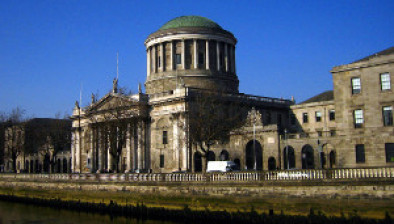High Court: Judge dismisses ‘tedious case’ claiming a vested right to apply for family reunification
A woman who sought judicial review of a decision refusing family reunification has had her application dismissed in the High Court.
Stating that the “tedious approach of ‘never mind the facts, look at the interesting law’ has no place in the practical business of litigation”, Mr Justice Richard Humphreys described the case as one in which the applicant’s legal representatives sought to rely on an interesting legal point to deflect attention from the lack of an adequate evidential foundation.
Background
In 2011, the Applicant, II, was left in the care of an aunt. Thereafter, a care order was granted under s. 18 of the Child Care Act 1991 and the Child and Family Agency (CFA) was in a position to act on II’s behalf. In 2014, II was granted refugee status, and Mr Justice Humphreys said “[t]he next logical step would have been to apply for family reunification if appropriate”.
The CFA did not make an application for family reunification until July 2018, when II was 17. The Department of Justice and Equality refused the application on the grounds that it was not submitted within 12 months of the commencement of the International Protection Act 2015.
On the CFA’s failure to seek family reunification, the Court heard inadmissible hearsay evidence that the whereabouts of II’s mother was unknown. Mr Justice Humphreys said that II failed to submit admissible evidence as to a “genuine inability” to contact her mother or other family members within the statutory time limit for applications for family reunification. He said that, even if II’s relatives were genuinely uncontactable; “there was nothing stopping [the CFA] from applying for family reunification within the statutory period of twelve months from the commencement of the International Protection Act 2015 on the basis that they were endeavouring to make contact with [II’s] relatives”.
The present proceedings were filed in February 2019, three months prior to II reaching the age of majority. The reliefs sought included:
- An order of certiorari quashing the decision to refuse family reunification;
- A declaration that the International Protection Act 2015 is contrary to the Constitution, the ECHR, and EU law.
Noting the other methods of achieving family reunification which II could have taken without prejudice to the present proceedings, Mr Justice Humphreys said that instead of taking a “simple and straightforward available step”, II went “for the nuclear option of seeking to have the legislation struck down, not just as it applies to her but urbi et orbi”.
Vested right to apply under the Refugee Act 1996
II argued that she had a vested right to apply for family reunification without any time limit under section 18(3) of the Refugee Act 1996, and that she carried this right forward for an unlimited period notwithstanding its repeal by the International Protection Act 2015.
Stating that this argument, which urged a wide interpretation of section 27 of the Interpretation Act 2005, would deprive the concept of repeal of much of its meaning and create “intolerable uncertainty”, Mr Justice Humphreys added that it would give the Act “a ghostly after-life such that years or even decades after its repeal, it could violently jerk back into life without warning at the whim of an applicant such as this one”.
Referring to SG (Albania) v Minister for Justice and Equality [2018] IEHC 184 in which the State’s reliance on a similar argument for wide interpretation of section 27 was rejected, Mr Justice Humphreys noted that the State was relying on SG in circumstances where the State was appealing the reasoning of that very case. To this, Mr Justice Humphreys commented:
“Nobody likes hearing ‘I told you so’, but the present case is a good instance of the sort of benefit that accrues to the State and the public interest if repeal means effective repeal”
Concluding that II’s right to take advantage of the Refugee Act 1996 ended on repeal, Mr Justice Humphreys said this was not the sort of vested right preserved by section 27 of the Interpretation Act 2005.
Constitutional challenge
Mr Justice Humphreys was also satisfied that II’s challenge to the International Protection Act 2015 did not arise, as this was premised on the “bald assertion” that II was unable to comply with the legislation. With no evidence to support this assertion, Mr Justice Humphreys reiterated that the application could have been made on the basis of inquiries being made as to the family members’ whereabouts. Thus, he said, “…the challenge falls in limine. The tedious approach of ‘never mind the facts, look at the interesting law’ has no place in the practical business of litigation”.
In any event, Mr Justice Humphreys was satisfied that it was not a breach of any particular constitutional right to have a 12-month time-limit for family reunification or even to have a time-limit that legal guardians must exercise on behalf of a minor. Nor was he satisfied that there was an inherent constitutional right to family reunification. Mr Justice Humphreys commented that, even if there was such a right, the “generous” time-limit was not disproportionate.
Considering whether the EU Charter on Fundamental Rights was engaged, Mr Justice Humphreys said the approach suggested on behalf of II was one which could “only be maintained on the Alice in Wonderland premise that words mean what one chooses them to mean”. Mr Justice Humphreys also rejected the claim that II had suffered a breach of her rights under the ECHR, and dismissed the application for judicial review.












